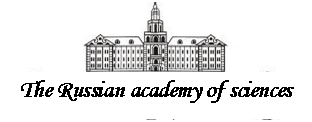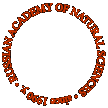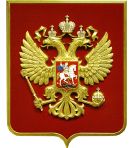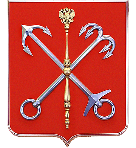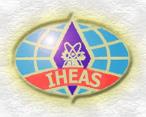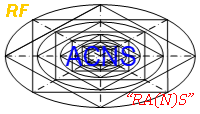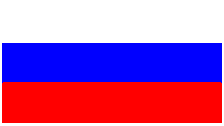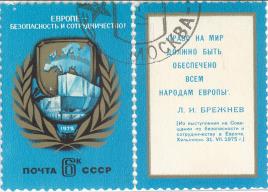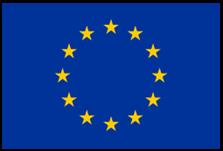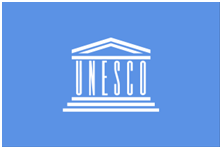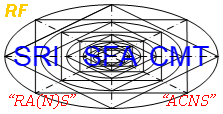

|
“The Vth international action [from the 01st of January 2016 y. to the 31st of December 2016 y.] (part 1) |
|
|
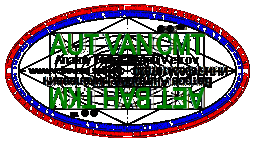
|
It is carried out according to the letter from the 27th of December 2011 y. №A26-13-808834 and the 27th of February 2013 y. №I-17399 |
|
|
|
Dear citizens of The Russian Federation and the foreign countries!
We invite You to take part in “The Vth international action
The table of contents of the printing manuscript (the scientific monography) “Knowledge is power” Francis Bekon “The philosophy of science without history of science is empty, and the history of science without philosophy of science is blind” Imre Lakatos
I. The table of contents of the printing manuscript (the scientific monography) The list of definitions 4 The list of reductions and symbols 5 The introduction 7 1. The basic concepts of the theory of information and the characteristic features of information 10 1.1. The information, its properties, information interaction and informatics conceptually 12 1.2. The kinds of the sources and consumers of information 18 1.3. The features of collecting and classification of information 19 1.4. The process of information interaction and its structure 20 1.5. The main approaches (criteria) to the classification of the characteristics of information 24 1.6. The principles and levels of information interaction 30 1.7. The spectrum of the problems of informatics on the way of informatization as a target vector of development 32 2. The concept of information technology and its kinds 34 2.1. The information revolution in the public relations as a factor of the development of science and technology 36 2.2. The stages of development of information technologies 39 2.3. The requirements and components of information technology 43 2.4. The tool base of information technology 45 2.5. The kinds of modern information technology 49 2.5.1. The information technology of data mining (acquisition) 51 2.5.2. The information technology of data processing 52 2.5.3. The information technology of data storage 54 2.5.4. The information technology of data transmission 56 2.5.5. The information technology of support of decision-making 62 2.5.6. The information technology of control in the technical systems 65 2.5.7. The information technology of support of the financial analysis 66 2.5.8. The information technology of management on the enterprise 72 2.5.9. The information technology of accounting and audit on the enterprise 85 2.5.10. The information technology of automation of document-flow on the enterprise 104 2.5.11. The information technology of information security 107 2.6. The main problems of use of information technology 109 3. The informatization as the process of encapsulation of the information technologies 110 3.1. The essence, purposes and principles of informatization 112 3.2. The general classification and essence of problems of informatization 117 3.3. The social problems of informatization 122 4. The information society and information market 128 4.1. The information resources and sectors of the market of information services 130 4.2. The information society and informatization of science 132 The conclusion 137 The bibliographic apparatus 141
II. The table of contents of the printing manuscript The introduction 3 1. The emergence of science and the main stages of its historical evolution 7 1.1. The prescience and science in the true sense word 7 1.2. The school science and elite science 8 1.3. The prescience and the developed science 9 1.4. The culture of the antique policy and the genesis of the first forms of theoretical science 11 1.5. The universities and workshops 14 2. The technics as the philosophical problem 15 2.1. The concept of technics: genesis and evolution 15 2.2. The images of technics in the philosophy of XXth century 18 2.3. The technics and the problem of human life 23 2.4. The social and spiritual parameters of technics 25 3. The science about the information and information society in the context of philosophical reflection 26 3.1. The formation of informatics as the interdisciplinary direction in the second half of the XXth century 26 3.2. Informatics and general theory of systems 28 3.3. The theories of information society 30 3.4. Informatics as the technical science 32 3.5. The efficiency of representation of knowledge 33 The conclusion 34 The bibliographic apparatus 35
III. The table of contents of the hand-written manuscripts The table of contents of the lectures “Philosophy of science and technics” The normative links The list of definitions The list of reductions and symbols The introduction 1. Philosophy of science and technics, the circle of its problems and the antique image of science 1.1. Philosophy of science: the circle of its problems 1.2. The problems of the genesis of science 1.3. Philosophy of equipment: the subject and structure 2. The development of European religious philosophy of science in the middle ages 2.1. The features of philosophy and science in the middle ages 2.2. The social-cultural image of medieval science 2.3. The theoretical-gnoseological image of science 3. Philosophy of science of renaissance era and modern times 3.1. The features of philosophy of science of renaissance era 3.2. The genesis and the main lines of science of modern times 3.3. The mechanistical empiricism 3.4. The mechanistical (mathematical) rationalism 3.5. The development of the image of science of European philosophy 4. The development of philosophy of science in the Russian philosophical social thought 4.1. The problems of the genesis of science in Russia 4.2. Philosophy of science of the Russian middle ages and renaissance 4.3. The image of science in the Russian social thought of the second half of the XVIIIth century 4.4. The image of science in Russian philosophy of the first half of the XIXth century 4.5. The image of science in Russian philosophy 5. The image of science in German classical philosophy 5.1. The features of philosophy of science in German classical philosophy 5.2. Kant I. in philosophy of science 5.3. Hegel G.W.F. in philosophy of science 6. The Western philosophy from the end of the XIXth century to the XXth century 6.1. The scientistical conceptions of science from the end of the XIXth century to the end of the XXth century 6.2. Antiscientistical philosophy of science from the end of the XIXth century to the end of the XXth century 7. The dialectic-materialistic conception of philosophy of science 7.1. The features of emergence and the main schools of dialectic-materialistic philosophy of science 7.2. The theoretical-methodological bases and problems 7.3. The development of the dialectic-materialistic conception of philosophy of science at Russia in the XXth century 8. The philosophical problems of scientific and technical reality 8.1. The forms of the spiritual development of The World 8.2. The concept and structure of the modern scientific reality 8.3. The novations and traditions in the science 8.4. The scientific revolutions 8.5. The eras (areas) of the development of science 9. The ontological bases of science 9.1. The concept of bases and the philosophical bases of science 9.2. The concept of ontology and the ontological bases of science 9.3. The concept of the object and subject of science 9.4. The deterministical-ontological bases of scientific knowledge 10. The gnoseological bases of science 10.1. The concept and structure of the gnoseological bases of science 10.2. The ideals of scientific and technical knowledge 10.3. The ideals and norms of justification and the structure of scientific knowledge 10.4. The problems of knowledge in the system of artificial intelligence (the computer epistemology) 11. The axiological bases of science 11.1. The formation and development of the axiological bases of science 11.2. The social and valuable determination of science 11.3. The axio-sphere of scientist and the values of science 12. The philosophical problems of modern science (the philosophical problems of the modern natural-science) 12.1. The concept and structure of the philosophical problems of science 12.2. The main philosophical problems of natural-science 12.3. The philosophical problems of philosophical cosmology 12.4. The physical, chemical and other philosophical problems of modern science 13. The philosophical problems of sciences about the society 13.1. The axiological problems of sciences about the society 13.2. The gnoseological problems of social-humanistical knowledge 13.3. The methodological problems of social-humanitarian knowledge 14. The philosophical problems of the modern technical and information reality 14.1. The philosophical problems of technical reality 14.2. The philosophical problems of information reality
IV. The table of contents of the hand-written manuscripts The table of contents of the manuscripts “History and philosophy of science and technics” 1. The introduction and problems of philosophy of science (download) 1.1. The axiological and methodological problems of science 1.2. The methodology of technical creativity 1.3. The historical natural-science pictures of The World 2. The social problems of the genesis of philosophy of science in Russia (download) 2.1. The general principles of emergence of the Russian science and philosophy of science 2.2. The purely Russian principles in the development of science 2.3. The difference of the western thought and the Russian thought in the science and philosophy of science 2.4. The main lines of the Russian philosophical thought 3. The philosophical problems of science (download) 3.1. The reasons of increased interest to the science 3.2. The emergence of knowledge about the science 3.3. The main philosophical problems of science: 4. The history of philosophy of science (download) 4.1. The basic concepts and definitions of the history of philosophy of science 4.2. The points of view on the history of philosophy of science: positivism, dialectic materialism and logics 4.3. The subject and main problems of the history of philosophy of science 4.4. The areas of the history of philosophy of science: 4.5. The formational approach of the history of philosophy of science: antiquity, middle ages, modern time, 4.6. The development of the complete philosophical conception of science 4.7. The solution of task about the method of philosophy of science 5. The conceptions of the genesis of science (download) 5.1. The general approaches of historical-scientific researches 5.2. The main models of the historical reconstructions of science 5.3. The main models of the history of philosophy of science: the cumulative model and the model of scientific revolutions 6. The emergence of two opposite directions in philosophy of science (download) 6.1. The internalism (Koyre A. and Hall R.) 6.2. The externalism (Merton R.K. and Krombi A.) 6.3. Theory of scientific revolutions (Kuhn T.S.) 6.4. Theory case study 6.5. The conceptions of modeling (Rozenblyum A.S., Winer N., Bykov T.V.) 6.6. The system theory 6.7. The evolutionary theory 6.8. The information theory 6.9. The social-cultural theory 6.10. The synergetical theory (Haken H.) 7. The conceptions of the development of antique science (download) 7.1. The conception of interrelation of the formation of science and philosophy 7.2. The positivistical conception (Comte I.A.M.F.X.) 7.3. The budding of science (Russell B.A.W.) 7.4. The gnoseogennical and sociogennical conceptions (Bogdanov A.A.) 7.5. The mifogennical conception (Hegel G.V.F. and Losev A.F.) 7.6. The conception of denial: the antique science wasn't 7.7. The dialectic conception 7.8. The science is connected with the emergence of a row of factors 7.9. The main stages of the development of antique science 7.10. The historical image of science 8. The main stages of development and the line of antique science (download) 8.1. The fundamental ideas and problems 8.2. The periodization by the change of the object and tasks of philosophy of science: 8.3. The main lines of ancient philosophy of science 9. The Christian rationalistic image of science (download) 9.1. The main lines of medieval science 9.2. The historical conditions of the formation of medieval philosophy of science 9.3. The characteristic lines of medieval philosophy of science 10. The social-cultural image of science of the middle ages 10.1. The social-cultural image of science 10.2. The theoretical-gnoseological image of science 10.3. The features of religious rationalism 11. The religious rationalism and the religious irrationalism (download) 11.1. The features of irrationalism 11.2. The features of religious rationalism 11.3. The features of religious skepticism 11.4. The kind of religious skepticism 11.5. The features of humanism 12. The religious skepticism (download) 12.1. The orthodox religious skepticism 12.2. The unorthodox religious skepticism 12.3. The problem of the existence of God 12.4. The features of interrelation of the religious skepticism and the religious humanism 13. The genesis and the main lines of science of the modern time (download) 13.1. The structure of scientific reality 13.2. The main lines of the science and philosophy of science of the modern time 14. The main forms of the transfer of traditions inside the science: 14.1. The features of European philosophy from the XVIIth century to the XVIIIth century 14.2. The main tendencies in the science of modern time 14.3. The images of science in philosophy of science of the modern time 15. The mechanistical rationalism 15.1. The scientific work of Descartes R. “The rules for the management of mind” 15.2. The scientific work of Descartes R. “The reasonings about the method for the good direction 15.3. The cognitive activity of person based on the three ideas (Descartes R.) 15.4. The basic concepts of God in the cosmological part of the teaching of Descartes R. 15.5. The three laws of mechanics as the eternal laws of nature (Descartes R.) 16. The mechanistical empiricism (Bacon F.) (download) 16.1. The scientific work of Bacon F. “About the value and success of knowledge, divine and human” 16.2. The scientific work of Bacon F. “New Organon” 16.3. The scientific work of Bacon F. “About the advantage and enhancement of sciences” 16.4. The task of Bacon F. “The great recovery of sciences” 16.5. The classification of knowledge (the humanistical principle) 16.6. The cognitive abilities of person: the memory, imagination and reason 16.7. The associative abilities of person: 16.8. The points of view on the subject of research and nature: God, nature and person 16.9. The natural philosophy (natural-philosophy) and natural philosophy (the natural sciences) 16.10. The theory and practice: physics, meta-physics and the abilities of person of the different nature 16.11. The ideals of person in philosophy: the sort (tribe), a cave, a square, a theater (the theory) 16.12. The classification of ideals and sciences of the person: 16.13. The analysis of the ways of knowledge and scientific knowledge: the way by hands, the way by roles and the way of bee 16.14. The scientific knowledge: the way by hands 16.15. The scientific knowledge: the way by roles 16.16. The scientific knowledge: the way of bee 16.17. The scientific work of Bacon F. “New Organon”: person is servant and scientist of the nature 16.18. The method of scientific knowledge of Bacon F. 16.19. The stages of the inductive method (the tables of openings): 16.20. The main restrictions of the reason of person (Bacon F.) 17. The critical rationalism of Kant I. (“Criticism of pure reason”) (download) 17.1. The features of the German classical philosophy of science 17.2. The role of science in the development of world culture 17.3. The system approach to the analysis of science: ontology, gnoseology, anthropology, logics and axiology 17.4. The dialectic conception of science on the basis of the meta-physical method in the science 17.5. The historical analysis of science 17.6. The main regularities of the development of human knowledge 17.7. The main ethical-humanistical problems in the science 17.8. The contradictions and difficulties on the way of an embodiment of science into the rationalism 17.9. The communication of philosophy of science and philosophy of technics 17.10. The ancestor (founder) of the system analysis in the science (Kant I.) 17.11. The problems of the conception of Kant I. 17.12. The components of the theory of knowledge of Kant I.: 17.13. The scientific work of Kant I. “Criticism of pure reason” 17.14. The scientific work of Kant I. “Criticism of practical reason” (“Criticism of the ability of judgment”) 17.15. The structure of sensory perception (cognition) in the science: the sensuality (esthetics) and mind 17.16. The kinds of scientific contemplation (Kant I.): the empirical contemplation and the contemplation of reason 17.17. The communication of the theoretical contemplation and the empirical contemplation as the psychological process 17.18. The theory of a priori forms of the judicious (rational) knowledge as the transcendental analytics 17.19. The different-kinds of sciences (Kant I.): 17.20. The logics as the science (Kant I.): the formal logics and the transcendental logics 17.21. The transcendental dialectics (Kant I.) as dialectics of the history of philosophy of science: 17.22. The kinds of conclusions (Kant I.): 17.23. The science is always confirmed by the experience and the cognitive abilities of person (Kant I.): 17.24. The communication between the unique experience and the transcendental mind (Kant I.) 18. The logical rationalism of Hegel G.V.F. (“Phenomenology of spirit”) (download) 18.1. The features of the development of science in the human society 18.2. The analysis of knowledge in dependence from the historical and social-cultural conditions 18.3. The scientific work of Hegel G.V.F. “Phenomenology of spirit” 18.4. The analysis of science from the common world-outlook positions and the principle of historicism 18.5. The two scientific approaches (Hegel G.V.F.): 18.6. The manifestations of spirit as the consciousness, reason and thinking 18.7. The science about the spirit (Hegel G.V.F. “Phenomenology of spirit”): 18.8. The historical steps of the development of knowledge: 18.9. The plans of the solution of scientific problems in “Phenomenology of spirit” (Hegel G.V.F.): 18.10. The prevalence of objective-ideological approach 18.11. The scheme of the development of knowledge (the way of spirit) and its manifestation: 18.12. The figure of way: the stages of the passing of knowledge 18.13. The consciousness (sensuality, perception and mind) and self-consciousness 18.14. The reason as the unity of life and thinking, synthesis and the overcoming of unfortunate consciousness: 18.15. The ratio of the spirit and reason in the free people 18.16. The religion as the stage of the development of understanding of spirit: 18.17. The absolute knowledge as the priority of the logical point of view over the historical point of view 18.18. The initial measure of object, essence, phenomenon, reality and subject 18.19. The mind as the source of empirical knowledge and the reason as the source of theoretical knowledge 18.20. The scientific concept as the unity of essence and phenomenon 18.21. The concrete scientific concept is identically to the scientific subject of research 18.22. The development of the forms of knowledge as the process of transition from the abstract to the concrete 18.23. The scientific knowledge as the logical reality 19. The functions of philosophy (philosophy and science) (download) 19.1. The concept of philosophy of science 19.2. The structural elements of philosophy of science: ontology as the studying about the life, 19.3. The main functions of philosophy of science: 19.4. The main stages of the development of philosophy of science: world-outlook before the philosophical period, 19.5. The science as the supervision, classification, description, experimental researches 19.6. The science and philosophy as the specific forms of public consciousness 19.7. Philosophy carries out the functions of the methodology of knowledge 19.8. Philosophy as the aspiration to the building of knowledge in the form of theory 19.9. Philosophy as the need of person in the complete understanding of The World 19.10. Philosophy as the justification of regularities of the functioning of sciences 19.11. The ratios of consciousness and matter, spirit and nature, thinking and life 20. The element, structure and system (download) 20.1. The concept of element in philosophy of science 20.2. The element as a set of atoms with the identical charge 20.3. The natural and artificial chemical elements 20.4. The theory of chemical elements and elementary particles 20.5. The influence of natural sciences and the research of chemical elements and elementary particles 20.6. The role of element and system in economics, sociology, law, science of politics and science of culture 20.7. The system as the essence (von Bertalanfi K.L., Mendeleyev D.I., Bogdanov A.A., 20.8. The system is organically connected with the other similar formations by the hierarchical stair, 20.9. The system has the certain structure and the external and internal environment of functioning 20.10. The whole system as the internal and external unity of the content and form 20.11. The characteristics of system aren't invariable and absolute in their real value 20.12. The typology and topology of systems is under construction by the different bases 20.13. The systems of inanimate (nonorganic) nature: geological, physical and chemical 20.14. The systems of life nature: plants, animals and person 20.15. The society as the special type of material systems 20.16. The ideal systems: the spirituality and products of cogitative activity: 20.17. The kinds of systems: opened and closed, stable (steady) and unstable (nonsteady), 20.18. The levels of systems by their sizes and scales: 20.19. The structure of public system: the economic subsystem, the social subsystem, 20.20. The social system as the unity of society and nature 20.21. The structure (composition, arrangement and order) 20.22. The communication of the difficulty of structure and variety of the functions of system 20.23. The ontological character of categories: the element, structure and system 20.24. The synergetical methods of research of systems (Haken H.) 20.25. The scientific work of Haken H. “Synergetrics” 20.26. The scientific researches of the Belgian physicist of the Russian origin Prigozhin I.R. 20.27. The scientific researches of the Russian scientists 20.28. Synergetrics and self-organization 20.29. The scientific problems of synergetrics (physics of nucleus and atomic nucleus): 20.30. Synergetrics as the young interdisciplinary science: 20.31. The methodological bases of synergetics 21. The concept of method and methodology (download) 21.1. The method as the way of scientific knowledge 21.2. The methodology as the system of methods, ways, receptions and operations 21.3. The methodology as the science about the structure and development of scientific knowledge, 21.4. The problems of method and methodology in philosophy and science 21.5. The ratio of concepts: method, discipline, theory, the subject of research, 21.6. The variety of the kinds of human activity and the variety of the methods of research 21.7. The methods of spiritual, ideal, practical and material activity 21.8. The multilevel conception of methodological knowledge: 21.9. The features of philosophical methods: antique dialectics (Heraclitus E. and Zenon E.), 21.10. The features of general-scientific methods: 21.11. The features of private-science methods: the ways and principles of knowledge, 21.12. The features of disciplinary methods: 21.13. The features of the methods of interdisciplinary research: 22. The method of scientific knowledge (download) 22.1. The concept of the method of scientific knowledge 22.2. The classification of the methods of scientific knowledge: 22.3. The empirical (sensual) methods of scientific researches: 22.4. The theoretical (rational) methods of scientific researches: 23. The general scientific methods (download) 23.1. The concept of general scientific methods 23.2. The classification (dichotomic) general scientific method: 23.3. The concept of abstractioning 23.4. The classification of abstractions: the isolating abstraction, 23.5. The concept of the analysis and synthesis 23.6. The classification of the analysis and synthesis: direct (empirical), 23.7. The concept of deduction and induction 23.8. The classification of deduction and induction: the deductive conclusion, 23.9. The concept of model and modeling 23.10. The classification of models: 23.11. The structure of modeling as the scientific research on the basis of models: the definition of task, 23.12. The main functions of models: the model as the source of information 23.13. The concept of the historical scientific method (historicism) and the logical scientific method (logics) 23.14. The communication between the historical scientific method (historicism) 24. The object of research and cognitive image: 24.1. The concept of the object of scientific research (phenomenon), 24.2. The concept of The material World and matter (abstraction) in the objective reality, 24.3. The structure of the actual object of scientific research: 24.4. The characteristics of the subjective image of The objective World 24.5. The concept of essence (thing) and phenomenon 24.6. The essence (thing) as the unity of sustainability 24.7. The phenomenon as the unity of variability 24.8. The structure of the real object of scientific research: the essence (thing) and phenomenon 24.9. The object of scientific research as the generalization of the difficult natural and social formations 24.10. The concept of the material unity of The World 24.11. The structure of the material unity of The World: 25. The activity of consciousness and practice as the engine and the criterion of truth (download) 25.1. The concept of the activity of consciousness 25.2. The structure of the activity of consciousness: 25.3. The structure of the internal activity of consciousness: the generators of the activity of consciousness 25.4. The structure of the external activity of consciousness: the practice as the engine and criterion of truth 25.5. The forms of manifestation of the activity of consciousness: 26. The classification of the objects of scientific research: 26.1. The classification of the objects of scientific research 26.2. The classification of the objects of scientific research 27. The concept about the material object of scientific research 27.1. The concept of attributes of the object of scientific research 27.2. The interrelation of attributes and the substances of the object of scientific research 27.3. The concept of the material object of scientific research 28. The representation about the structure of matter (substance): 28.1. The levels of the internal system organization of the material object of scientific research: 28.2. The first level of the internal system organization of the material object of scientific research: 28.3. The second level of the internal system organization of the material object of scientific research: 28.4. Third level of the internal system organization of material object of scientific research: 28.5. The fourth level of the internal system organization of the material object of scientific research: 29. The representation about the structure of matter (substance): 29.1. The classification of the levels of the structure of matter, 29.2. The main types of material systems: nonorganic, organic and social 29.3. The concept of the development of material systems: single-polar, regressive and progressive 30. The historical analysis of the object and the historical synthesis of the object (download) 30.1. The principle of development demands the unity of the historical analysis and the historical synthesis 30.2. The historical analysis of the object of scientific research as the consecutive transition 30.3. The historical synthesis of the object of scientific research as the transition 31. The subject of science and the process of knowledge: 31.1. A set of the material objects of scientific research and their difficult and multilevel communications 31.2. The concept of the subject of scientific research 31.3. The structure of the process of scientific knowledge: 31.4. The ways of idealization of the object of scientific research: 31.5. The ways of idealization of the object of scientific research: 31.6. The ways of idealization of the object of scientific research: 31.7. The ways of idealization of the object of scientific research: 31.8. The ways of idealization of the object of scientific research: 32. The reasons of idealization of the object and subject of research (download) 32.1. The pronounced activity of the human knowledge of reality 32.2. The infinite complexity, variability, fluidity 32.3. The scientist can't comprehensively capture and understand at once 33. The philosophy of technics of the dialectic-materialistic philosophy (download) 33.1. The historical forms and representatives of materialism: 34. The basic dialectic principles, laws and categories (download) 34.1. The basic dialectic principles: 34.2. The basic dialectic laws: 34.3. The main dialectic categories: 35. The gnoseological roots (bases) of materialism (download) 35.1. In the process of scientific knowledge there is the need and possibility 35.2. The concept of materialistic outlook: 36. The genesis of the dialectic-materialistic philosophy of science and technics: 36.1. The theoretical basis (sources) of the dialectic-materialistic philosophy of science and technics: 36.2. The natural-scientific openings of the dialectic-materialistic philosophy of science and technics: 36.3. The social-economic prerequisites of the dialectic-materialistic philosophy of science and technics: 36.4. The transition to the nonclassical dialectic-materialistic philosophy of science and technics 37. The researched matter (as the poly-syllabic and multi-connected essence) 37.1. The dialectic view of the events: 37.2. The meta-physical view on the events doesn't work any more: 37.3. The features of the accounting of mutual influence and the forecasting of the development of matter 37.4. The features of neuro-cybernetic and the synergetic approach 38. The scientific term “the dialectic materialism” is entered by Plekhanov G.V. 38.1. The structure of the dialectic-materialistic philosophy of science and technics: 38.2. The dialectic-materialistic philosophy of science and technics 38.3. The dialectic-materialistic philosophy of science and technics as the dialectic logics: 38.4. The dialectic-materialistic philosophy of science and technics as the theory and method of knowledge: 38.5. The dialectic-materialistic philosophy of science and technics 39. The conceptual basis of society, public relations 39.1. The concept of society in a wide sense: 39.2. The concept of society of narrow sense: 39.3. The conceptual bases of public relations: 39.4. The structural communications of public relations: 39.5. The functional communications of public relations: 39.6. The dynamic communications of public relations: 39.7. The society as the difficult, ordered and self-governed integrity of public relations, 39.8. The main functions of social system: 39.9. The dialectic-materialistic philosophy of science and technics places particular emphasis 40. The public relations and the stratification of society 40.1. The material relations as the basis of public relations: 40.2. The state and ideological relations as the superstructure of public relations: 40.3. The society is stratified and structurally differentiated 40.4. The elements of stratification and the structural differentiation of society: 40.5. The features of the conflict of interests between the classes in the sphere of consumer benefits: 40.6. The prerequisites of the emergence of classes: the public division of labor, 40.7. The forms of class fight: economic, political and ideological 41. The development of society: the social-ethnic approach, the formational approach, 41.1. The social and ethical row of public relations: sort, tribe, nationality and nation 41.2. The formational row of public relations: 41.3. The organizational row of economy: the subsistence economy, the commodity economy and the planned economy 41.4. The civilization row of public relations: 42. The material conditionality of the life of society: 42.1. The natural conditions of society: the natural environment and national-population 42.2. The material production of society: the productive forces 42.3. The way of production as the organization of the means of production: 43. The social-economic formation, the interrelation of the technology of production 43.1. The kind of social-economic formation: 43.2. The interrelation of the technology of production and the type of civilization (Marx K.): 44. The concept of technics and the stages of development of the social-economic formation of society (download) 44.1. In the process of the development of technics allocate the various stages 45. The stages of the development of technical knowledge (download) 45.1. The before-scientific stage of the development of technical knowledge 45.2. The second stage of the development of technical knowledge 45.3. The third (classical) stage of the development of technical knowledge 45.4. The fourth stage of the development of the complex automated production (the present time): 46. The material types of the systems and methods of thinking (download) 46.1. The material objects of research possess by the internal form and the system organization: 46.2. The classification of material systems: 46.3. The classification of the methods of scientific thinking: 46.4. The development as the irreversible qualitative change: 47. The conception of the interdisciplinarity of science and technics (download) 47.1. The common problems of the interdisciplinarity of science 47.2. The objective prerequisites of the interdisciplinarity of science 47.3. The scientific approaches to the analysis of the interdisciplinarity of science: the methodical approaches 48. The problems of leadership in the science, the genesis of the distsiplinarity and interdisciplinarity of science (download) 48.1. The problems of financing in the science 48.2. The gnoseological problems 48.3. The scientific work of Polikarpov N.N. “History of science and technics” 48.4. The synergetic bases of interdisciplinarity in the science (Haken G.) 49. The ways of interpretation of the concept of the interdisciplinarity of science (download) 49.1. The concept and conception of the interdisciplinarity of science 49.2. The organizational structure of science is independent from the level of development and differentiation 49.3. The formation of skills of the joint scientific work 49.4. The characteristic of researches on the first line of science 49.5. The subjective and objective process of scientific creativity 49.6. The interdisciplinarity and methodical purposes of science 49.7. The integration in the science 49.8. The signs of the crushing of sciences and scientific directions 50. The concept of scientific discipline, the levels of interdisciplinarity 50.1. The scientific discipline as the form of joint work 50.2. The scientific discipline as the form of carrying out of scientific researches 50.3. The scientific discipline as the form of the organization and knowledge acquisition (knowledge mining) 50.4. The scientific discipline as the form of cooperation of the scientists from the different countries of The World 50.5. The scientific discipline as the form of the preparation of scientific personnel 50.6. The scientific discipline as the form of the institutionalizing of science 50.7. The classification of the levels of the interdisciplinarity of science: 50.8. The historical forms of the interrelation of sciences: the emergence of kernel (cementization) of science, 50.9. The active role of science in the public life 51. The kinds of the interdisciplinarity of science (download) 51.1. The classification of the kinds of interdisciplinarity in the science: 51.2. The discussion of process of the interdisciplinarity of science 52. The aspects of interdisciplinarity (download) 52.1. The classification of the levels of research of the interdisciplinarity of science: 53. The genesis of the object and subject of scientific knowledge (download) 53.1. The emergence of the object of scientific research 53.2. The emergence of the subject of scientific research 53.2. The emergence of the subject of scientific research 54. The concept of the object and subject of science (download) 54.1. The scientific sense of the term the object (subject) of scientific research 54.2. The scientific sense of the term of the subject of scientific research 54.3. The scientific sense of attributes of the object (subject) of scientific research 54.4. The scientific sense of concept of the idealization of the object (subject) of scientific research 54.5. The scientific sense of concept of the abstraction of the object (subject) of scientific research 55. The general models of the history of science: the classical models and the nonclassical models (download) 55.1. The concept and main tasks of the history of philosophy of science and technics 55.2. The most general approaches and programs of the historical-scientific researches: 55.3. The theories and conceptions of the history of philosophy of science and technics: 55.4. The models of development of the history of philosophy of science and technics: 55.5. The classical cumulativical model of the historical development of science: 55.6. The classical model of scientific revolutions: 55.7. The classical theory of scientific revolutions (Kuhn T.S.) 55.8. The classical theory of scientific revolutions (Popper K.R.) 55.9. The scientific work of Feyerabend P.K. “Against the methodological coercion” 55.10. The scientific work of Polani M. “The personal knowledge” 55.11. The nonclassical conception (theory and model) of case studies (Laudan L. and Mc Mallin R.) 55.12. The nonclassical models of the history of philosophy of science and technics (Rozenblyum A.S. and Winer N.) 55.13. The scientific work of Winer N. “A role of models in the science” 55.14. The scientific work of Bykov G.V. “The historiographic models” 55.15. The scientific work of White T.H. “Meta-history” 55.16. The scientific work of Neuymin Ya.G. “Models in the science and technics” 55.17. The scientific work of Uyemov A.I. “The logical bases of the method of modeling” |
